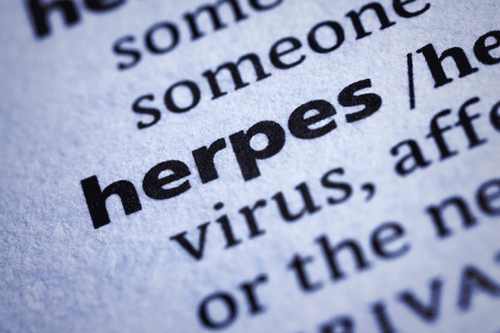More than 3.7 billion people under the age of 50 are infected with herpes simplex virus type 1 (HSV-1), which commonly causes 'cold sores' and can also cause genital herpes, according to new research by the University of Bristol and the World Health Organisation [WHO]. The findings, published in the journal PLOS ONE, reveal the first global estimates of HSV-1 infection.
Herpes simplex virus is categorised into two types: herpes simplex virus type 1 (HSV-1) and herpes simplex virus type 2 (HSV-2). Both HSV-1 and HSV-2 are highly infectious and incurable. HSV-1 is primarily transmitted by oral-oral contact and in many cases causes orolabial herpes or "cold sores" around the mouth. HSV-2 is almost entirely sexually transmitted through skin-to-skin contact, causing genital herpes.
The new estimates highlight, however, that HSV-1 is also an important cause of genital herpes. Some 140 million people aged 15-49 years are estimated to be infected with genital HSV-1 infection, primarily in the Americas, Europe and Western Pacific. Earlier this year, WHO published estimates of herpes simplex virus type 2 (HSV-2) infection showing that an estimated 417 million people between 15-49 years of age have infection caused by HSV-2. Taken together, these estimates suggest that over half a billion people between 15-49 years of age have a genital infection due either to HSV-1 or HSV-2. This highlights the large global burden of genital herpes caused by both HSV types.
Dr Sami Gottlieb of WHO, an author on the study says: "These findings highlight the crucial need for the health community to take into account infection by both HSV types when addressing the global burden of genital herpes."
Dr Katharine Looker, the study's lead author from Bristol's School of Social and Community Medicine, commented: "It is likely that in higher-income settings, fewer people are becoming infected with HSV-1 as children. At the same time, oral sex is now common. This means that more people are able to be infected with HSV-1 genitally after becoming sexually active."
Given the lack of a permanent and curative treatment for both HSV-1 and HSV-2, WHO and partners are working to accelerate development of HSV vaccines and topical microbicides, which will have a crucial role in preventing these infections in the future. Several candidate vaccines and microbicides are currently being studied.
Regional infection estimates
Estimates for HSV-1 prevalence by region among people aged 0-49 in 2012
- Americas: 178 million women (49%), 142 million men (39%)
- Africa: 350 million women (87%), 355 million men (87%)
- Eastern Mediterranean: 188 million women (75%), 202 million men (75%)
- Europe: 207 million women (69%), 187 million men (61%)
- South-East Asia: 432 million women (59%), 458 million men (58%)
- Western Pacific: 488 million women (74%), 521 million men (73%)
Estimates of new HSV-1 infections among people aged 0-49 in 2012
- Americas: 6 million women, 5 million men
- Africa: 17 million women, 18 million men
- Eastern Mediterranean: 6 million women, 7 million men
- Europe: 5 million women, 5 million men
- South-East Asia: 13 million women, 14 million men
- Western Pacific: 11 million women, 12 million men
More information: Katharine J. Looker et al. Global Estimates of Prevalent and Incident Herpes Simplex Virus Type 2 Infections in 2012, PLoS ONE (2015). DOI: 10.1371/journal.pone.0114989
Journal information: PLoS ONE
Provided by University of Bristol





















